Rest and Recover: Easy Restorative Yoga for Beginners
This article is all about restorative yoga for beginners, and the best restorative yoga poses to try at home!
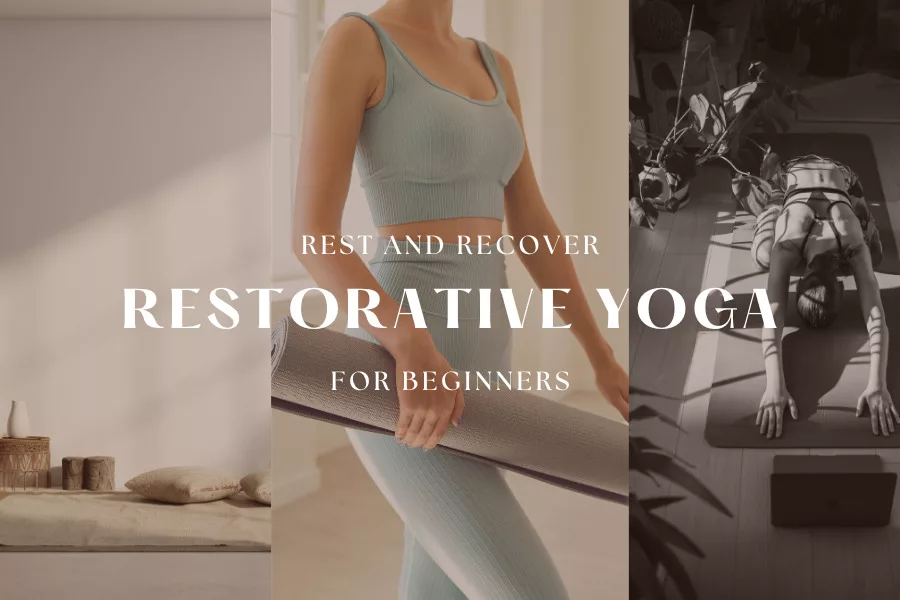
In the fast-paced daily tasks of modern life, finding moments of peace and tranquility can seem like an elusive dream. We often find ourselves juggling work, family, and social commitments, leaving little time for self-care. That’s where restorative yoga comes to the rescue. In this blog post, we’ll dive into the soothing world of restorative yoga for beginners—your ticket to relaxation, rejuvenation, and a renewed sense of well-being.
Well go over the best restorative yoga poses, how to practice restorative yoga for beginners at home, props to consider, and how to incorporate mindfulness into your practice.
By the end of this article you will have all the knowledge and tools you need to start practicing restorative yoga for beginners.
The Magic of Restorative Yoga For Beginners
In a world that glorifies hustle and bustle, restorative yoga stands as a gentle reminder to slow down and give our bodies the rest they truly deserve. Unlike more dynamic forms of yoga, restorative yoga is all about sinking into and holding supported poses, and allowing your mind, muscles and body to unwind.
Understanding the Essence
Restorative yoga is like hitting the reset button for your body and mind. It encourages deep relaxation through a series of passive, supported poses, often held for several minutes. The focus is on releasing tension, calming the nervous system, and fostering a sense of inner peace. Now, let’s explore some easy restorative yoga practices tailor-made for beginners. The pose allows the muscles to relax and starts adjusting the connective tissue (the fascia). It’s not uncommon for buried emotions to surface during these holds. Simply allow the feelings to surface and flow through similarly to an ocean wave.
The Best Restorative Yoga Poses
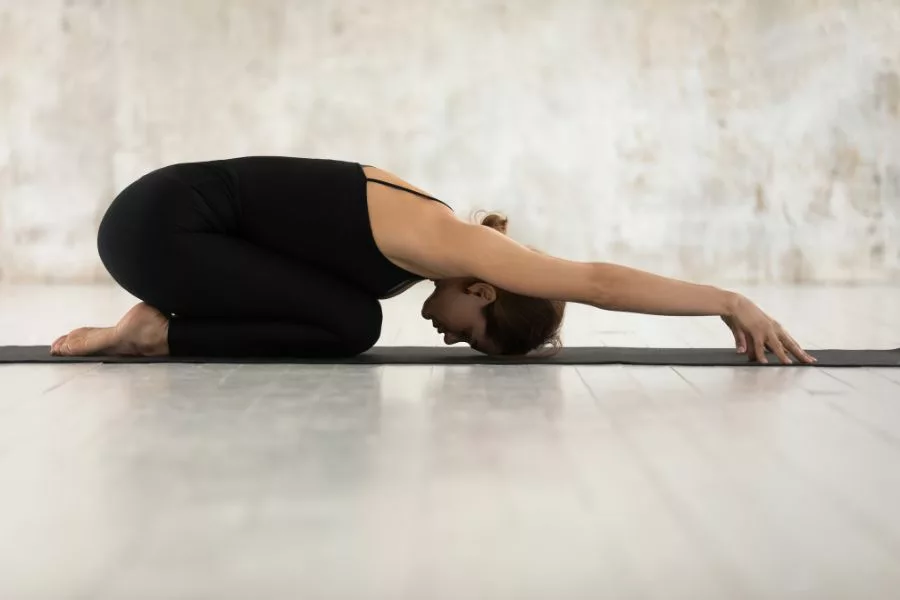
1. Child’s Pose (Balasana): The Ultimate Relaxation Starter
Begin your restorative yoga journey with the humble Child’s Pose. Kneel on your mat, gently lower your torso between your thighs, and extend your arms in front of you or by your sides. This pose is a delightful stretch for your back, hips, and thighs, allowing you to surrender to the mat’s support.
Tip: Place a cushion or bolster under your forehead for extra comfort and support.

2. Supported Bridge Pose (Setu Bandhasana): Elevate Your Relaxation Game
Elevate your restorative experience with the Supported Bridge Pose. Lie on your back, bend your knees, and lift your hips. Slide a yoga block or bolster under your sacrum, letting your weight settle into the support. This gentle backbend opens your chest and promotes a soothing release in your spine.
Tip: Experiment with different heights for the block or bolster until you find your sweet spot of comfort.
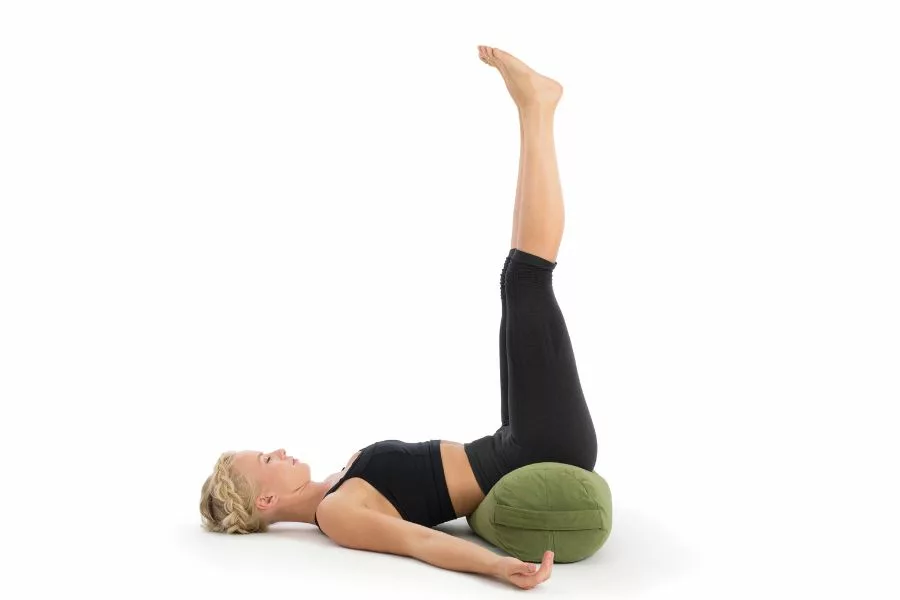
3. Legs Up the Wall (Viparita Karani): Inversion Bliss
If you’ve had a long day and your legs are begging for relief, Legs Up the Wall is your go-to restorative pose. Find an open wall space, lie on your back, and extend your legs up the wall. This inversion encourages relaxation, relieves lower back tension, and even helps with circulation.
Tip: Feel free to place a folded blanket or bolster under your hips for added support.
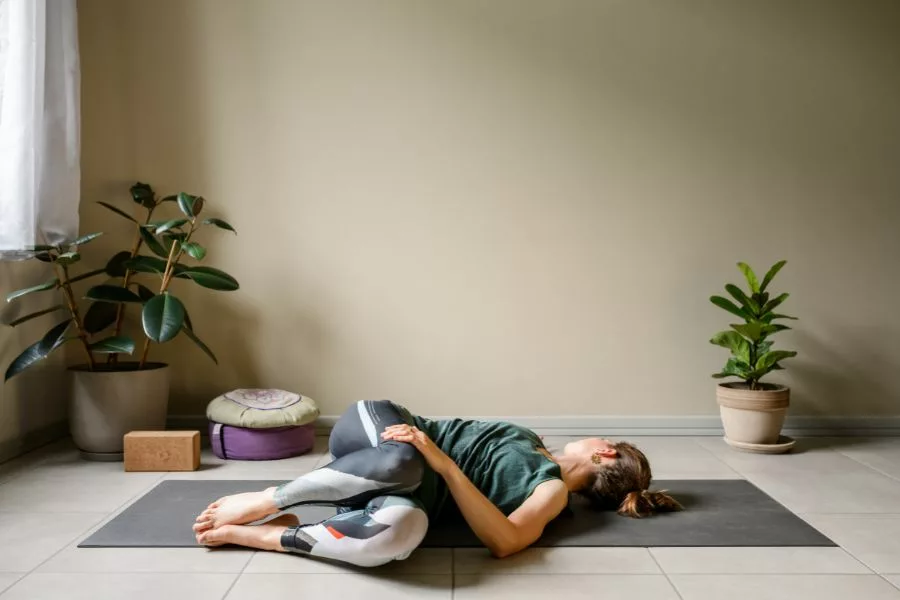
4. Supported Twist (Supta Matsyendrasana): Gentle Spinal Release
Lie on your back with your knees bent. Shift your hips slightly to the right and let your knees fall to the left. Place a bolster or a stack of blankets under your knees for support. Extend your arms to the sides, palms facing up. This twist is fantastic for releasing tension in the spine and promoting a sense of ease.
Tip: Experiment with the height of your support to find the most comfortable twist for you.
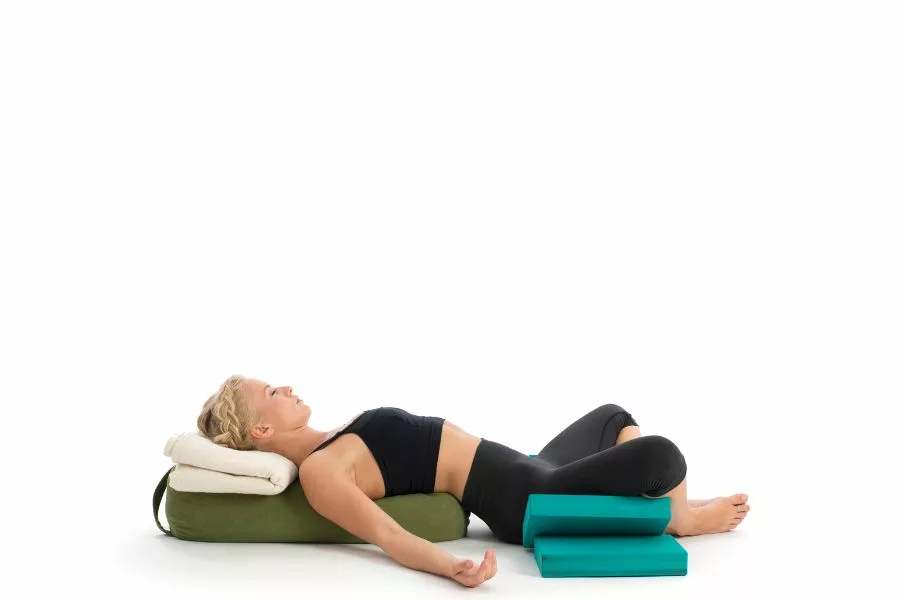
5. Reclining Butterfly Pose (Supta Baddha Konasana): Hip and Heart Opener
Sit on your mat with the soles of your feet together and knees apart. Slowly recline backward, supporting yourself with blankets or a bolster along the length of your spine. Allow your arms to rest by your sides. This pose opens the hips and chest, making it an excellent choice for relaxation and a gentle heart opener.
Tip: Place cushions under your knees for added support if you feel any discomfort.
6. Banana Pose (Bananasana): Sideways Stretch Bliss
Lie on your back and shift your hips a few inches to the right. Cross your left ankle over your right, reaching your arms overhead and clasping your hands. This elongated stretch targets the side body, releasing tension along the spine. Repeat on the opposite side for a well-rounded experience.
Tip: Use a cushion under your head for extra support and comfort.
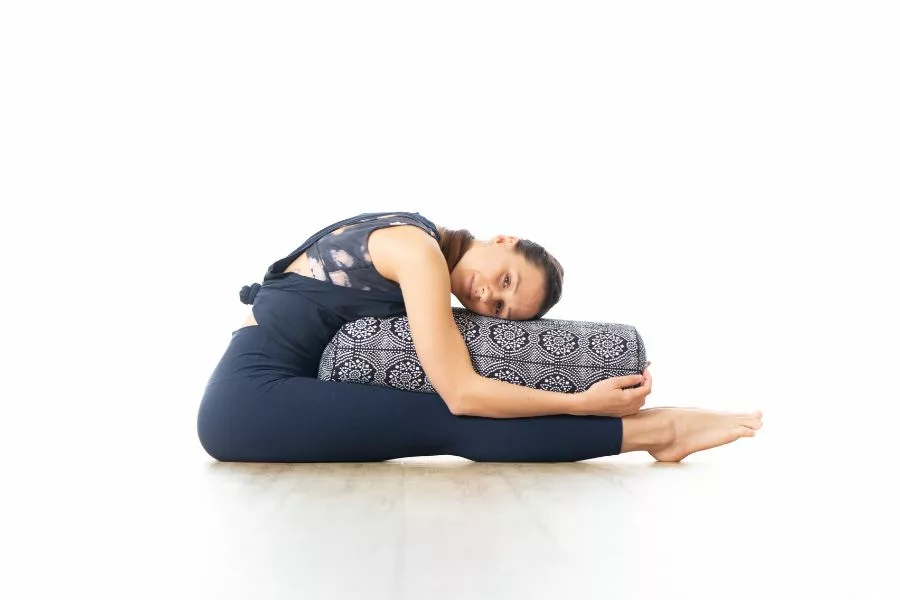
7. Supported Forward Fold (Paschimottanasana): Hamstring Heaven
Sit with your legs extended in front of you. Place a bolster or blankets on your thighs, allowing your upper body to fold forward over the support. This gentle forward fold stretches the hamstrings and lower back, promoting relaxation and release.
Tip: If your hamstrings are tight, bend your knees slightly or use additional props for support.
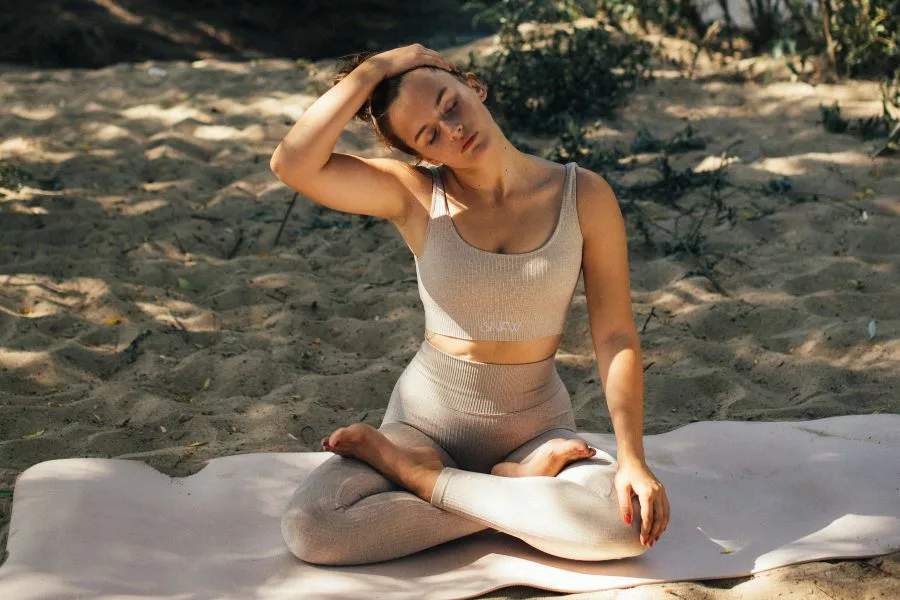
8. Easy Seat with Neck Stretch: Stress-Busting Neck Release
Sit comfortably cross-legged. Inhale and lengthen your spine, then exhale, tilting your right ear toward your right shoulder. Place your right hand on your head for a gentle stretch. Inhale back to center and repeat on the other side. This easy seated pose is perfect for releasing tension in the neck and shoulders.
Tip: Close your eyes and take slow, deep breaths for an added relaxation boost.
Creating Your Sacred Space At Home
1. Set the Scene: Ambiance Matters
Creating the right atmosphere is key to a successful restorative yoga session. Dim the lights, light a few candles, and put on some soothing music. Let the ambiance complement the tranquility you’re about to cultivate on your mat.
2. Props Are Your Friends
Don’t be shy about reaching for props—they’re your secret allies in the world of restorative yoga. Bolsters, blankets, blocks, and straps can enhance your experience, providing the support needed for deep relaxation. Consider them your yoga toolkit for ultimate comfort.
Tip: Invest in a good-quality bolster for versatile use in various poses.
The Art of Mindfulness in Restorative Yoga For Beginners
1. Breathe In, Let Go: Mindful Breathing Techniques
In the whirlwind of everyday life, our breath often takes a back seat. In restorative yoga, conscious breathing is your guide to mindfulness. Practice deep, intentional breaths, inhaling through the nose and exhaling through the mouth. Let each breath anchor you in the present moment.
Tip: Try the 4-7-8 breathing technique—inhale for a count of 4, hold for 7, and exhale for 8.
2. Body Scan Meditation: A Journey Within
As you settle into each restorative pose, take a moment for a body scan meditation. Start from your toes and work your way up, bringing awareness to each part of your body. Notice any areas of tension and consciously release them, allowing a wave of relaxation to wash over you.
Tip: Combine the body scan with gentle visualization, imagining tension melting away with each breath.
Embracing Your Restorative Yoga Journey
1. Consistency is Key: Make It a Habit
Incorporating restorative yoga into your routine doesn’t require a massive time commitment. Even dedicating 10-15 minutes a day can make a significant difference in your overall well-being. Consistency is the key, make it a habit that you look forward to.
Tip: Schedule your restorative yoga practice at the same time each day to create a sense of routine.
2. Listen to Your Body: The Ultimate Guide
In the journey of restorative yoga, your body is your most reliable guide. Listen attentively to its whispers and respond with kindness. If a pose doesn’t feel right, modify it or choose an alternative. The goal is to create a space for restoration, not discomfort.
Tip: Don’t be afraid to explore and tweak poses to suit your unique needs.
Closing Thoughts: Nurturing the Body, Nourishing the Soul
Restorative yoga is not just a physical practice; it’s a soul-nourishing journey that invites you to embrace stillness in a world that never stops moving. As you embark on this path, remember that there’s no right or wrong way to practice. It’s about finding what feels good for you, surrendering to the support of your props, and allowing yourself the gift of rest.
Whether you’re unwinding after a hectic day or simply craving a moment of peace, let restorative yoga be your sanctuary. Embrace the simplicity, relish in the stillness, and watch as restorative yoga becomes your trusted companion on the journey to a more mindful and balanced life.






